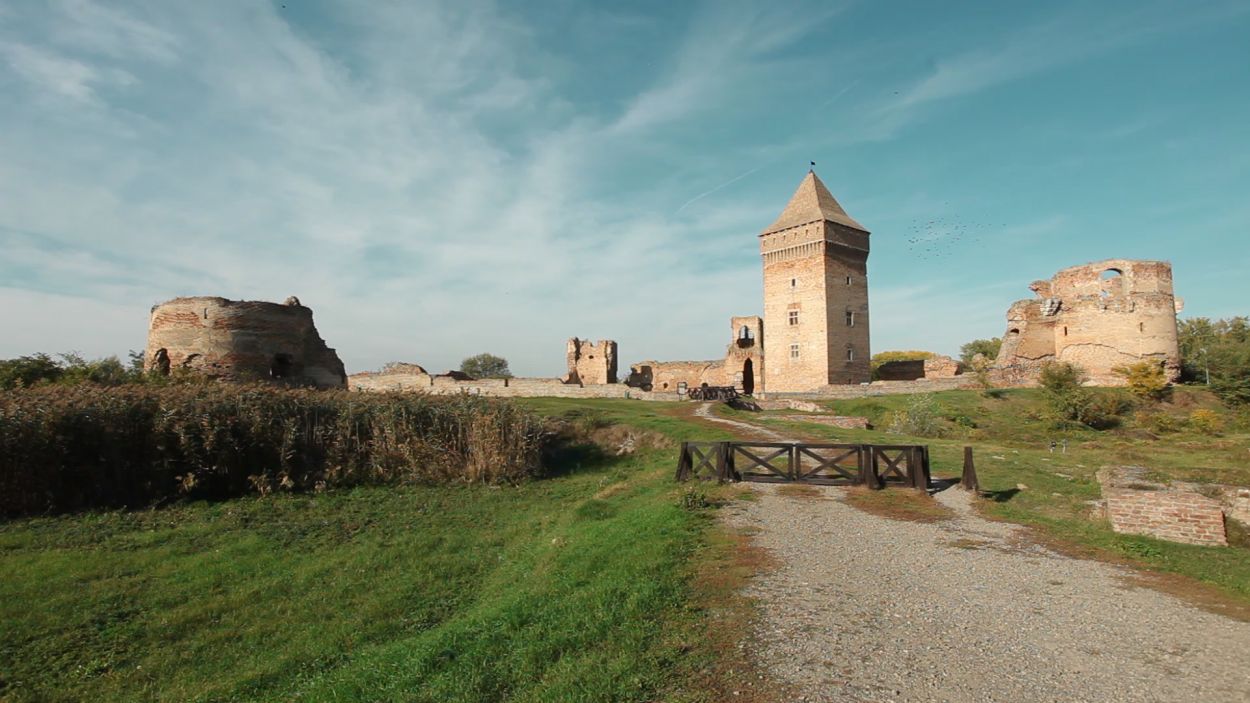The entire great fertile plain between the Danube and the Tisa rivers was named after the once famous city of Bač, which was watched over and guarded by an imposing fortress. There are traces of life from the early Neolithic Age to the present day – which makes eight thousand years! Even today, the fortress in Bač, almost seven centuries old and inseparable from the great river, is the most important and the best preserved mediaeval fortress in the area of Vojvodina.
That is why this site of great historical importance has been nominated for inscription on the list of cultural and natural heritage of UNESCO (The United Nations Educational, Scientific and Cultural Organisation). And equally important: the fortress has been recently renovated, with European Union funds.
The tower with five floors has been completely reconstructed, and on the first and third floors there is an exhibition of archeological exhibits excavated in the area of the fortress. With its facilities, the tower is available for tourist visits throughout the year. “It is important that this heritage is well valorised, preserved, used, to serve society in the broadest possible sense,” explains Slavica Vujović, architect-conservator.
“All this clearly shows the great importance of the European Union and European projects, with the help of which we were improving the condition of the Bač Fortress. With the European projects new knowledge and new standards are acquired, which is important for our entire profession.”
When it comes to UNESCO, this is the first nomination of Serbia in the category of “cultural landscape”, and also the first independent nomination of our country since 2007. “On this terraced terrain with an abundance of vegetation, water and natural soil, the continuity of settlement is monitored, from which a distinct cultural diversity originated, as evidenced by the richness of preserved tangible and intangible heritage,” the Ministry of Culture and Information states.
The present fortress was built between 1338 and 1342, when King Charles Robert of Anjou strengthened the borders of the Kingdom of Hungary. The works on the extension and fortification of the walls lasted for almost two centuries.
Preserving Europe’s common cultural heritage, supporting and promoting the arts and creative industries in Europe are among the goals of the European Union. Concrete initiatives, such as the European Year of Cultural Heritage, are dedicated to giving all citizens access to this vibrant and diverse culture. Protection and promotion of cultural heritage are an integral part of the EU mission in Serbia.
The EU recognises the importance of Serbian cultural heritage for Europe and the world. The renovation of Golubac Fortress, Franciscan Monastery in Bač, Pirot City, Subotica Synagogue, dating from 1902, the construction of the Visitors Centre in Lepenski Vir, the reconstruction of the Jevremovac Botanical Garden in Belgrade, the renovation of the National Theatre in Belgrade – are some of the most important projects which were financed by the EU in Serbia.





